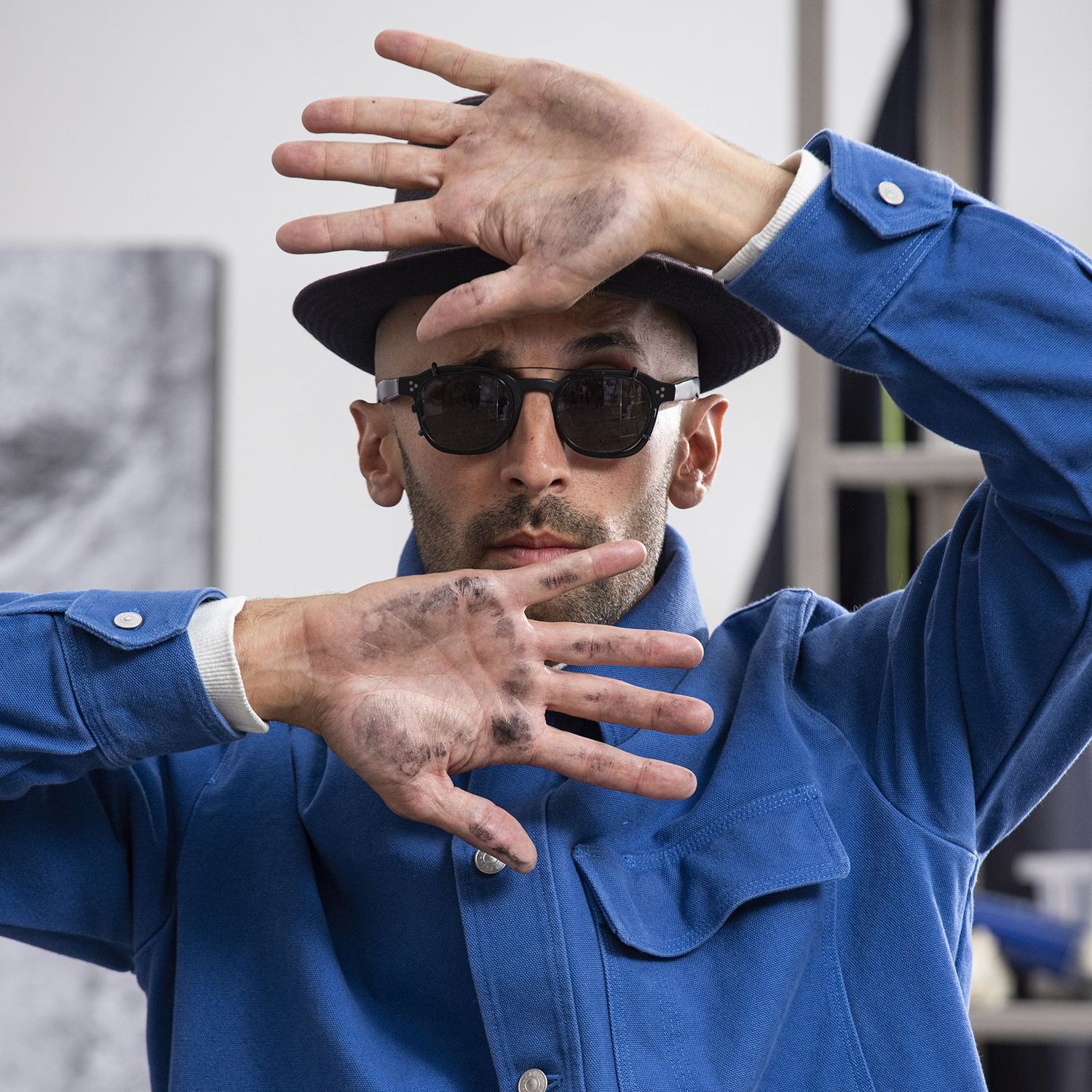We speak to French artist JR about his solo exhibition Déplacé·e·s, now on show at Kulturhuset
French artist JR often poses a rather big question: Can art change the world? It’s a question he’s been trying to answer since the early aughts, travelling from the world’s most glamorous cities (including his native Paris and his current home, New York) to war-torn regions to refugee camps to maximum security prisons. Along the way, he uses his art – most famously large-scale black and white photography plastered graffiti-style to public spaces – to spread awareness, spark conversations and bring beauty to unlikely places.

Photo: Leonard Stenberg

Photo: Leonard Stenberg
Now, he finds himself in Stockholm, where an exhibition at Kulturhuset dubbed *Déplacé·e·s *spotlights through photography the millions of children displaced due to war, climate disasters and persecution. At the heart of the exhibition is a series of massive tarp-like prints of black and white photos depicting a handful of displaced children from around the world.
To mark the exhibition opening, the artist gathered a couple of hundred locals in Sergels torg to unfurl a 45-metre work depicting a young Ukrainian refugee. Once unfurled, the participants walked it precession style across the square. Over the past several months, the artwork, called Valeriia, has traveled from city to city, the subject’s smiling face simultaneously a beacon of courage and a reminder that two years on, the war in Ukraine is still raging.

Déplacé.e.s, Procession, Triptyque, Turin, Italy, 2023. Valeriia, on the far left, was unfurled in Sergels torg. Photo: © JR
“Valeriia was the first image of this Déplacé·e·s series,” JR tells me when we meet on a bench in the centre of his show. It’s dark in the exhibition space, but he’s wearing his signature hat and glasses. “The war had just started in Ukraine and I drove there from my house in Paris. I’ve never had a conflict so close that I could drive there.” Fifteen hours later he crossed the border with his French passport and entered Ukraine.
Shortly after that, someone sent him a photo of a little girl who had just left Ukraine for Poland. “She had made it safely with her mother and she was just playing outside,” says JR. Immediately touched by the photograph, he went to Poland and found the girl and her mother to get permission to turn it into the massive artwork. Soon JR and a group of civilians and soldiers were marching the image through Ukraine, a signal to planes overhead that children were living there. “She represents all the children of her country – something bigger than her,” he says.

Portrait of JR. Photo: Grégoire Machavoine
This marks the first time JR has shown his work in Stockholm in two decades and the first time he’s staged a solo exhibition. Kulturhuset, which is celebrating 50 years, feels like an apt place – an institution that gathers communities through art. Perhaps unsurprisingly, JR is enamoured with the space. “To be honest, this museum is pretty incredible – the Pompidou in Paris got inspired by this building,” he says. “I love going through all the floors – there’s a place for kids, a place for people to play chess. There’s the rooftop, the theatre… I’ve never seen a place that is combining that. I don’t think there’s an equivalent even in France.”
As Valeriia continues her journey around the world, she becomes almost as instantly recognisable as the artist himself. But JR’s signature look is more than just clever personal branding. He calls the hat and glasses combo a “reverse disguise” – not even one of his 1.8 million Instagram followers would be likely to recognise him without his favourite accessories. “When I pass the border I remove them and I’m just a regular tourist,” he says. I tell him it’s quite fortuitous that his reverse disguise happens to be quite fashionable. “Thank god,” he agrees, noting that he’s been sporting the look since he was about 19 (today he’s 41). “When I was younger I used to wrap my head and leave my eyes. But it was very inconvenient.”
